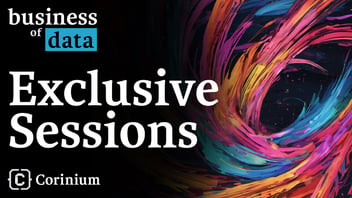Data Ethics Inside National Australia Bank - Jade Haar

NAB's Head of Data Ethics, Jade Haar, discusses the formation of the data ethics function within the bank and why it’s so important
While the area of ethics has been discussed in the corporate world for decades, its definition is expanding to encapsulate the increasing way that data and analytics can influence business decisions and customer relations.
For Jade Haar, National Australia Bank’s Head of Data Ethics, the realm of data ethics combines elements of legal and privacy departments, philosophy and modern technology. Haar sat down with Business of Data to discuss data ethics ahead of her speaking engagement at Corinium's CDAO Deep Dive: Data Governance event in September.
While Haar took on her current title two years ago, she says a considerable amount of time in her earlier role in NAB’s legal department as its Chief Privacy Officer was spent formalising what a data ethics role might entail.
“When we were planning to adjust in the wake of GDPR, ethics was part of that discussion,” she says. “So, moving from more of a legal foundational view of privacy to include thinking on what a global higher standard looked like. When you think about higher standards, the word ‘ethics’ seems to come out.”
Before taking on the title, Haar says the bank had performed a lot of work to consider what the future would look like in managing areas of data privacy and ethics. With data and analytics increasingly important to decision making, bringing legal, compliance and privacy expertise closer to data and analytics innovation made sense.
“My team (Data Ethics), and the privacy compliance team which forms of our global privacy office, is part of our enterprise data space, and it’s great to get that more data-focused perspective,” Haar says.
“Traditionally privacy was heavily focused on legal compliance, but when you are working in the data division you are working with data scientists and people who are very technical, working with governance people, and working with standards people with the ability to think about how data is being used responsibly is very operational.
“In that environment of diverse thinking, it made sense to recognise we would be doing more analytics and AI because there is a push for more speed and efficiency. In turn, we have to make sure we are doing that responsibly, so that requires some checks and balances.
Haar says the danger of large organisations sometimes talking about ethics roles and teams is it can become a bit like a poster, where it exists more as something that is nice to say you have. At NAB, part of Haar’s role is ensuring data ethics is operationalised, that principles are reviewed regularly and that different business units appreciate its importance.
“We want our people to use data, we want the data to be of good quality and want the data to be used respectfully and beneficially, so we have to make people understand that we aren’t here to block innovation but rather we’re here to make sure its use is responsible,” she says.

Data Ethics in Practice
Throughout the COVID-19 pandemic, many have experienced financial difficulty through job losses or salary reductions. Customers impacted by changes to income has led to call volume increases at the banks.
Haar says in busy and stressful times like this, it has been critical for the bank to address customer needs effectively, efficiently and tactfully.
“You don’t want people to be quiet about these things,” she says. “We want our customers to reach out and contact us if they are having difficulty, but it’s often a hard conversation to have and being proactive in contacting them can help start the right conversations.
“So, trying to figure out how you can help and trying to understand, using data, who is at risk of having financial difficulty is really important. All banks need to understand if their customers are facing difficulty, if they are not meeting their payments or if there have been certain measures put in place that can help.
“We have models that have been designed to help predict and detect financial difficulty and we have to be very mindful of how those are rolled out and how we contact the customer because it can be sensitive, particularly if the individual is unaware that they are showing early signs of financial difficulty.
“If somebody does show up in our model as experiencing financial difficulty, NAB will approach this from a non-judgemental perspective and look to use this as an opportunity to connect our customer with information to assist them.
“We must ensure that these sorts of models are being reviewed ethically, that they are not just legally compliant, but actually considerate of fairness, transparency, and making sure that we are targeting people who really need it while not unfairly treating other groups.
“We need to ensure we have looked at our data for any bias and then mitigating that.”
Maturity Around Ethics Thinking
The banking and financial sectors have long had established processes for managing risk and compliance. Now, Haar says, is a good time to drill down on what those mean once data and analytics, ethics and trust come into the mix.
“I thoroughly appreciate that some people may have ethics as part of another role and maybe they are asking a general counsel to think about ethics. A lot of companies have ethics nested somewhere,” she says.
“Banks have traditionally had people in ethics teams, but they have been more in conduct-risk areas. Now, having teams thinking about it more from an application of data perspective as well, I think, shows maturity and that we are acknowledging community expectations.
“It says that we know that data is so critical to the decisions that we make now and in the future that we really want to think about it sincerely and mindfully. We want to be trusted.”
To receive weekly data and analytics stories and insights, delivered right to your inbox, subscribe to Business of Data


